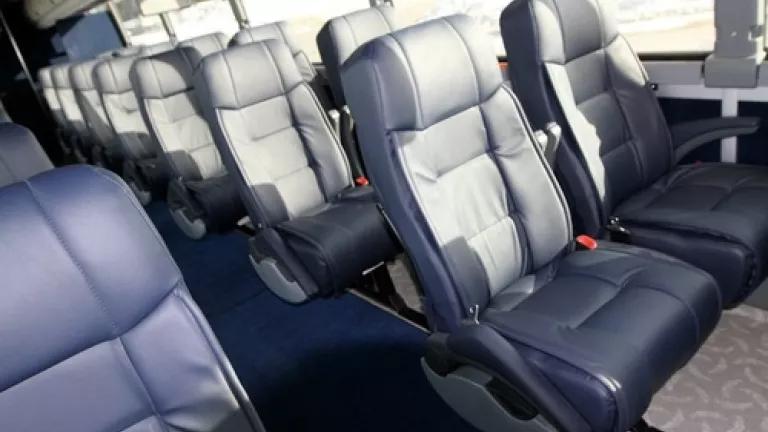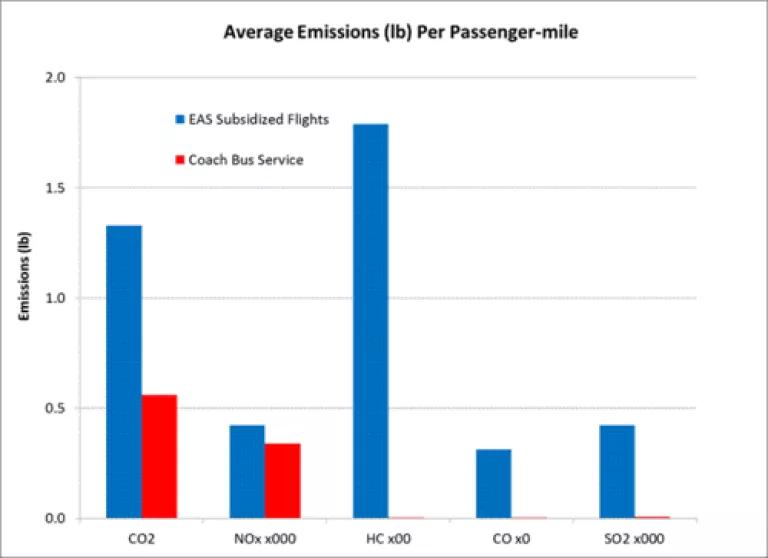New Study Shows Intercity Shuttles Can Provide Cheaper, Cleaner Service than "Essential Air"

Part of the extension of the Federal Aviation Administration’s authorization law that Congress bungled last month, resulting in the furlough of 4,000 aviation workers, some 70,000 construction layoffs and hundreds of millions in lost ticket taxes, is a program known as Essential Air Service (EAS). This program, enacted more than three decades ago, was intended to keep these communities connected to the aviation network. It subsidizes flights to and from rural airports, on some routes at a cost of $1,600 per trip. A new analysis by M.J. Bradley and Associates called Keeping Rural Communities Connected shows that intercity buses could keep a set of small rural communities connected for less than half-cost, or even no subsidy at all, while at the same time reducing fuel consumption and global warming pollution.
The study looked at 38 communities located within 150 miles of a major airport, and compared the costs of EAS service versus intercity surface shuttle service between the two locations. On many of these routes, such as Altoona, Pennsylvania to Washington-Dulles Airport, bus operating costs would be less than half the cost of air service. Passengers going from Mussel Shoals, Alabama to Memphis International would pay less than $50 for a bus ticket, as opposed to $475 to fly. In all, shifting to bus service on these short routes could save $89 million a year, and reduce average passenger costs as much as $285 per round trip.
One of the costs assumed in the shuttle bus service is purchase of new vehicles for this use, and many people may not realize how luxurious these new shuttles can be. Here’s what the seating looks like on a C & J bus from New England, a company I’ve ridden with before. Imagine the comfort and elbow room delivered by one of these shuttles compared to the cramped space allotted to you in plane!
When you factor in environmental savings, the benefits of bus service over these very short flights is even greater -- nearly 6 million gallons of gas saved, and annual carbon pollution cut by more than 63,000 tons. A table summarizing the environmental benefits of air vs. surface transportation is pasted below (NOx and HC are components in urban smog, SO2 is sulfur dioxide which contributes to acid rain and CO is carbon monoxide).

If once-routine reauthorizations like FAA funding are no longer a given in this Congress, let’s scrutinize them for the right reasons. Maybe it’s time to consider providing high-quality shuttle service to rural communities, and trim an expensive, environmentally harmful program.
